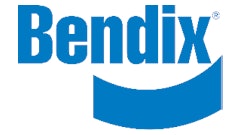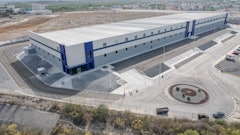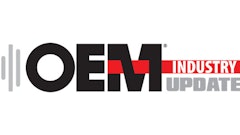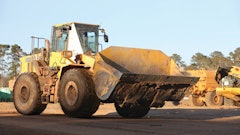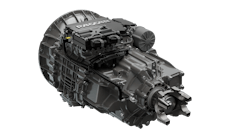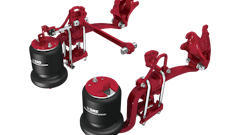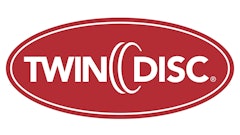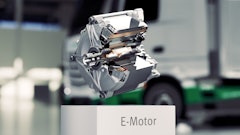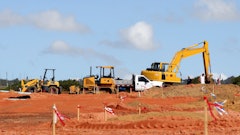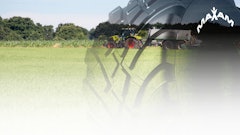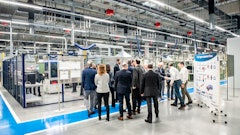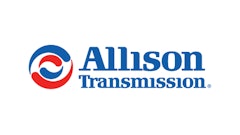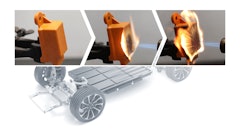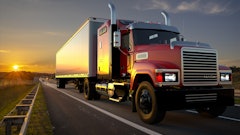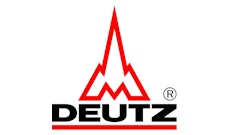
What are the emerging economies being investigated as opportunities?
We are continually looking for opportunities to strengthen our footprint across the globe to serve our international customer base and access fast growing markets. China is an example of a key growth market for GKN. Our goal is to increase our business in China over the next five years, working with both global and local OE’s. GKN Land Systems already has one facility in Liuzhou, China and we have recently set-up a JV which will help us serve the important agricultural sector in the country.
Additionally we are always looking to drive growth in the Americas and Europe where some of our most important customers reside.
There is today a more stable environment for investment in many of the BRIC countries as inflation comes under control and as their governments are promoting growth and investment in their countries. Many of GKN Land Systems’ leading global customers are recognizing the opportunities in these countries and opening production plants supplying everything from tractors to construction and industry equipment, and GKN positions itself to support these customers. Additionally there are strong domestic, more regional players building equipment in these economies that we would equally look to support and do business with. We have not lost touch with the mature more traditional markets such as Western Europe and North America and see growth potential in all areas. GKN Land Systems plans to continue expanding its global footprint and being a truly global player with a local service, supporting our customers globally.
What does GKN look for in a region when it considers investing?
GKN takes a very cautious, carefully considered approach with any investment decision. As any global public company would, GKN looks first to be certain that its investments are secure for its shareholders. Only following extensive due diligence would we invest, after considering local economics, political stability and ultimately the supporting business case for growth opportunities in the region.
Design simplification potential benefits and challenges?
The “less is more” approach is an important topic. Within GKN Land Systems design simplifications are constantly reviewed for various reasons, but the key reason is customer benefit. Our approach of Power Source to Power Applied offers components such as clutches, driveshafts, gearboxes, attachments, brakes, wheels and so on. Design modifications, refinements and simplifications ensure that we are always optimizing existing product performance.
Benefits to the customer include improved service, increased reliability and functionality, ease of use for the operator, standardization and reduced complexity in part numbers and range. Sometimes these modifications are to satisfy demands for cost reduction or content reduction to focus on higher performance. By working together with our customers we can work to increase their competiveness in their market place. There are however always challenges, which vary by market and customer, and may lead to a possible loss of flexibility and efficiency in specific applications. One thing to stress is that GKN Land Systems will never compromise on safety, performance or reliability, regardless of the challenges that may be put in front of us.
At GKN Land Systems we have taken a different approach to design simplification. The “Integration of Systems and Solutions” to offer tailored, fully integrated solutions - from the source of the power through to the application of the power. We deliver to customer’s power to where it is needed, optimizing performance and maximizing efficiency for the operator.
The Integrated Systems and Solutions offering gives increased content and value to our customers. This could lead to higher complexity for us, but less for our customers, as we take on some of their development tasks thus making their job more focused and less complex. The key challenge is of course the much deeper interaction required with the OEM and end customer to achieve this goal; we at GKN Land Systems are ready to embrace this challenge.
Across all our varying product ranges we have ongoing projects utilizing analytical tools and methodologies such as VA/VE which enables us to review the design and manufacturability of our products. This is one approach that enables us to stay competitive. Our driveshaft and wheel business, for example, offer many products that have been modified to simplify for manufacturability, use and service.
An example of a recent “solutions approach” to product is our new offering of an integrated wheel, hub and spindle arrangement. Instead of three part numbers, three components, three orders, the customer only needs one. It is much simpler. Another would be the off-highway industry’s first double clutch technology for industrial gearboxes, designed by GKN. A new milestone in transmission technology, the double clutch transmission was developed to meet the requirements of a major OE engine manufacturer for a smaller envelope and reduced weight.
At GKN Land Systems we are currently undergoing an exercise to review our product offering to include many more Integrated Systems and Solutions in the portfolio and customer offering.
Opportunities for simpler design?
The company has continued to move with the times by investing in technological advancements and applying engineering know-how developed within the automotive and aerospace sectors. In doing so the business is able to deliver added value, best in-class products for the off-highway vehicle markets. Today’s world calls for modern technologies to tackle a range of issues, and the off-highway industry is no different.
The opportunity to capitalize on a simpler design is dependent on the customers’ value proposition and products that can actually be simplified without compromising performance expectations.
Key areas will be performance efficiencies and serviceability of components and entire vehicles. The “Keep It Simple” approach in complex, maybe difficult to access areas of a machine or easiness of installation of, for example, a drive shaft makes life for service staff and operators much better.
Other areas of opportunity are standardization of components and design for manufacturability, to enable efficient costing and increase product content throughout.
How has your business model changed?
The challenging conditions of 2008 and the subsequent recovery brought a number of issues into focus. We now assess decisions on a global basis and have changed the manufacturing organization to reflect this. The other major learning point from 2008 was the need to be able to act quickly and this has led to the streamlining of a number of decision making processes. Contingency planning has also been taken to a new level of detail and the number of scenarios increased.
The use of parameter driven design tools for certain families of products has become a major feature that we now employ. Working pattern flexibility is an area that has seen further development since the recession as customer ordering patterns have changed. The general trend toward leaner production and supply chains has been accelerated by the recession as customers demand shorter lead times, faster response to enquiries and, in general, smaller and more frequent deliveries.
By continuing to focus on innovation, even during difficult economic times we are able to stay one step ahead of the customer’s requirements. Industrial customers are constantly looking for new solutions that can add value to the performance of their machinery—by improving efficiency or reliability or delivery supply chain improvements. This provides our business with a strong foundation for future growth.
We focus on the implementation of Value Stream type manufacturing solutions to give the best product and customer focus. Technology is deployed as appropriate to minimize steps in the process (eg “one hit” machining, robotics and fast changeovers). We have examples where technology is used to ensure consistency (robotic welding) or consistent quality (laser metrology) and we investigate advanced manufacturing technologies and materials to ensure that we are prepared for them as and when products require or utilize them. Examples here might be additive layer manufacturing, composite materials, net shape forming and high speed machining. Software solutions vary greatly but it is vital that our strategy allows for the global aspect and we are moving away from “local” solutions into applications that foster knowledge sharing and consistency across the business.
On the horizon
As vehicle manufacturers desire new technologies that can bring greater fuel savings and reduced CO2 emissions, electrification is emerging as a key global trend. GKN Land Systems is at the forefront of new product development in the electric and hybrid vehicles arena for off-highway vehicles and I think this is a technology requirement that will gain momentum.
Products in the off-highway industry are well suited to the benefits of energy recovery but we need to bear in mind the sometimes harsh climatic conditions which many off-highway machines are subjected to. This means there is a requirement for specialized and very reliable, durable sensors and controls that will survive the tough working environments and extensive operating hours.
This is where GKN as a global engineering specialist can leverage its knowledge from work already undertaken in the automotive sectors and draw upon the wealth of experience and group wide technologies from all those working under the GKN umbrella. Our engineering teams always work to support customer’s visions and future technologies to ensure that the off highway industry does not lag behind technologically.
Innovation should be part of an ongoing strategic program of research and development activity, leading to the introduction of new products and product enhancements. Not something that is turned on and off.
What technological breakthroughs do you think will help the heavy-duty mobile equipment industry propel itself forward?
An increase in the use of electro-mechanical systems, integrated condition monitoring, adaption of technology used in other industries such as double clutches, hybrid drives (hydraulic and electric), effective disconnect solutions for powertrains and service opportunities are all potential breakthrough technologies. The work that GKN Land Systems is currently undertaking, creating a prototype electric hub drive system, demonstrates GKN’s commitment to emerging electric drive technologies. Similarly its eDrive concepts for electric and hybrid drivelines make it possible to electrify secondary drives for special-purpose and construction machines in the off-highway sector. Electric drive systems are recommended for use not only in the construction machinery industry and the municipal sector, but also in farming, and hold the promise of greater efficiency and improved functionality.
There is one key topic that I think is a fundamental requirement to propel the industry forward, which is faster development cycles to speed up the research, development and delivery of new technologies. As we said earlier, flexibility, leaner production, multiple vehicle platforms, changes in batch sizes and order patterns have all been subject to change since the global economic downturn. This not only means the need for faster, more frequent deliveries, but also faster more frequent technology introductions.
GKN Land Systems has developed Technology Roadmaps as an approach to supporting its various Multi Generation Product Plans. We look at “carry and cross over” synergies, we look at our products’ life cycles and seek out opportunities to increase our offering by combining products to offer customers integrated systems and solutions. This enables us to work with customers to ‘build in’ new technology right from the outset.
Technologies of the future
There are advanced technologies that indeed have the potential to revolutionize the heavy-duty vehicle market.
As farming and mining operations expand, the efficiencies of high horsepower vehicles are required to cover the additional ground in the time available. In addition, a number of equipment manufacturers already have guidance systems which allow machinery to be driven without operator input to improve efficiency and productivity leading to an increase in the use of advanced automation on vehicles, semi and full autonomy with enhanced condition monitoring features, hybrid solutions for improved fuel efficiency, drive concepts that supply sub systems efficiently and intelligently, and lowered emissions.
The increasing focus on low-carbon technology is driving demand for lighter weight structures, increased power, improved fuel efficiency, higher payloads and an increase in the use of electrical power. Something that we are seeing already is the use of different materials such as composites and changes to manufacturing techniques to enable weight reduction, increased complexity in structures, and enhanced durability.
Finally, machine controls and monitoring software embedded in customer’s ERP and dispatch programs are another trend that we see emerging.
What advanced technologies can GKN see as potential future paths for its own products developments, designs and implementation?
There are many exciting developments that are on the horizon and are constantly evaluated by our in-house development teams, in conjunction with our suppliers, customers and other third parties such as universities.
GKN Land Systems also sponsors a number of initiatives, where we challenge students to look at the industry in a new way and look for new ideas that can be incorporated in our products, systems and solutions. We are always looking at materials such as composites, powdered metals and sintered components that are developed and used by our sister divisions in GKN Aerospace, GKN Driveline and GKN Powder Metallurgy. Fostering a culture of innovation is important especially when manufacturing products for increasingly complex and competitive global markets, while at the same time focusing on longer term research projects and longer term strategies. GKN has a newly formed GKN Global Technology Strategy Board, which focuses on technology across the entire group, additional funds have been granted to increase spend on R&D. We passionately believe in and live to our strapline Engineering that moves the world.
What keeps you up at night?
As the business continues to be the best at what it does positioning itself close to its customers and partnering with leading OEMs will ensure GKN Land Systems can maintain its offering of comprehensive engineered solutions from Power Source to Power Applied in a targeted manner.
There are many challenges, some of which we have already discussed. All have the potential to keep me up at night; on-going emission control activities, efficiency challenges, changes to vehicle usage patterns, cost of ownership, serviceability in increasingly remote areas, operator training, material and energy cost hikes, issues around intellectual property, standardization of electrical systems and software, speed of development cycles, developing production facilities in under-developed economies, resourcing great talent…the list could be endless. We foster a culture of operational excellence across the business, through our people, products and processes. An established global footprint, which will continue to develop, a commitment to manufacturing and customer excellence and applying leading-edge technologies to capitalize on the opportunities presented both in our existing markets and new sectors will hopefully ensure that these challenges do not keep me awake at night.
There is an increasing amount of Smart technology available at our finger tips, day and night. Using this technology in a clever way to the benefit of our businesses means that we can respond faster. It is imperative that we work together in partnership with customers, suppliers, professional associations, Standards’ organizations (ISO), industry roundtables, trade shows and last but not least you, the industry press, to align ourselves to a common goal and work to overcome any challenge that face our markets regardless of our roles, we all have a part to play.
Streamlining the GKN Land Systems business and re-structuring to focus on the key areas of systems, solutions and product development means we are better positioned to respond to existing and new industry challenges, and this will be achieved through a global community of best practice which leverages tools, processes and customer relationships.
As customers strive for increasingly efficient, environmentally sustainable vehicles and machinery to meet the demands of a crowded planet, GKN Land Systems continues to innovate in the off-highway sector. We will continue to work to lead the market in the design of highly technologically advanced systems to meet these needs.
Reinhard directs the Engineering and Technology function of GKN Land Systems to deliver robust, cost-effective product solutions, and develops and supports the Innovation and Core Engineering function in creating and developing tomorrow’s technology. Reinhard’s previous role was Product Line Leader, Caterpillar Global Mining, Hydraulic Mining Shovels. He first joined the business in 1995 when it was O&K Mining and saw it grow under its different owners: Terex, Bucyrus and most recently Caterpillar. Reinhard has gained experience working in the US and various Asian countries, and started his career in the mining industry in Namibia and South Africa. Reinhard has an M.Sc. in Mining Engineering from the Technical University of Aachen.




